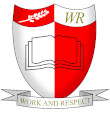Art & Design News
Intent
At William Ransom we want every child to know and believe that they are an artist.
Our intent is to empower our pupils with the skills and confidence to produce creative, imaginative work. We want every child to have the opportunity to explore their ideas, be curious and record their experiences, as well as exploring the work of others and evaluating different creative ideas. All ideas are encouraged and all art is valued. We want every pupil to feel confident in expressing themselves through their art work and to always enjoy that creative process. The process of creating art underpins our intent. The finished product is always celebrated and always valued.
At William Ransom our intent is that our pupils will become confident and proficient in a variety of techniques including drawing, painting, sculpting, as well as other selected craft skills, e.g. collage, printing, weaving and patterns. Pupils will develop their knowledge of a diverse and relevant range of artists and will be encouraged to evaluate that art as a stimulus for their own.
As pupils progress through different topic areas, they have the opportunity to work independently, as well as in collaboration with others. As well as creating individual masterpieces, pupils are also encouraged to comment on and suggest improvements to their own work, as well as that of others.
Art is also used to inspire, enrich and enliven other curricular areas such as History, Geography and RE.
















Implementation
National Curriculum
As a school, and in accordance with the National Curriculum’s expectations, we aim to ensure that all pupils at Key Stage One are taught:
- to use a range of materials creatively to design and make products
- to use drawing, painting and sculpture to develop and share their ideas, experiences and imagination
- to develop a wide range of art and design techniques in using colour, pattern, texture, line, shape, form and space
- about the work of a range of artists, craft makers and designers, describing the differences and similarities between different practices and disciplines, and making links to their own work
We aim to ensure that all pupils at at Key Stage Two pupils are taught:
- to develop their techniques, including their control and their use of materials, with creativity, experimentation and an increasing awareness of different kinds of art, craft and design.
- to create sketch books to record their observations and use them to review and revisit ideas
- to improve their mastery of art and design techniques, including drawing, painting and sculpture with a range of materials [for example, pencil, charcoal, paint, clay]
- about great artists, architects and designers in history
Progression of Skills





Sketch Books
At Key Stage 2 the use of sketch books allow pupils to develop ideas and basic skills that they will apply to their work. Work in sketchbooks links to final pieces with pupil’s development seen through practice and experimentation.









Visiting artists and art themed days
As well as timetabled art lessons, we enrich our curriculum through themed art days where we invite visiting artists to lead workshops and assemblies. These inspire, engage and challenge our pupils. They allow the children to try new techniques and expand their knowledge through an immersive and practical experience.














Art Club
We run a weekly art club. Our art club aims to give our pupils the freedom to create art either individually or collaboratively. We draw on the work of other artists and the art techniques being taught in school and strive for this club to be child led. The children choose the art they want to create.




Inclusion
We hope to create a learning environment where every child feels included, valued and encouraged.
At William Ransom teaching will ensure that art is accessible to all children by planning art and design that:
- Is challenging for children of different abilities in each key stage
- Motivates children
- Caters for children’s diverse learning needs
- Differentiates work through activities and expected outcomes
- Uses other adults to support all ability groups
Assessment
Assessment is ongoing and continuous through formative teacher assessment. Informal judgements allow teachers to give feedback to children about the success of their learning by identifying each child’s progress.
Impact
The impact of our art and design curriculum can be seen not only in our children’s work but also through classroom displays and the school environment. We have a clear skills progression in Art and Design at William Ransom. By Year 6, children will have studied texture, line, space, form, colour, shape and pattern. They will have been introduced to a variety of techniques and be able to apply their knowledge of these techniques to create their own unique artwork.
As well as teaching the knowledge and skills within the curriculum we aim to foster a love and appreciation of art and the impact it can have on all areas of our lives.


